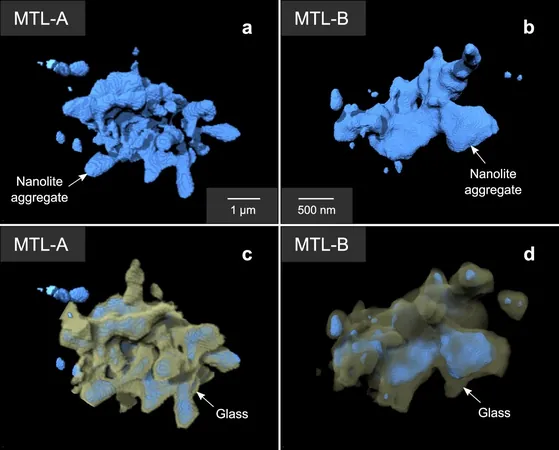
Unlocking the Secrets of Explosive Volcanoes: The Hidden Role of Nanoscale Crystals
2025-09-10
Author: Nur
Tiny Crystals, Big Impact: How Nanoscale Structures Influence Eruptions
In a groundbreaking study by researchers at Diamond Light Source, microscopic crystals known as nanolites may hold the key to predicting volcanic eruptions. With communities living in peril near active volcanoes, understanding these tiny entities could change the game for disaster preparedness.
Explosive volcanic eruptions aren’t just fire and brimstone; they unleash enormous columns of ash and gas that can wreak havoc hundreds of kilometers away. But what makes some eruptions dramatically more violent than others? The answer lies in the conditions faced by rising magma as it makes its way through the Earth’s crust.
The Nanoscale Mystery: What Are Nanolites?
As magma ascends, it undergoes changes, forming crystals and gas bubbles that thicken the molten rock, increasing the likelihood of explosive eruptions. The recent study published in Nature Communications, led by Dr. Emily C. Bamber, dives deep into the role of these nanoscale crystals and reveals their unexpected consequences.
Nanolites, which measure less than 1 micron (for scale, a human hair is about 100 microns), are notoriously challenging to study with traditional microscopy. However, using cutting-edge techniques like X-ray ptychography on Diamond's I13-1 beamline, researchers peeked at these elusive structures, revealing their profound influence on volcanic activity.
Explosive Insights from Nicaragua's Volcanoes
The research focused on volcanic rocks from the Las Sierras-Masaya region in Nicaragua, famous for two violent basaltic eruptions: the Fontana Lapilli and the Masaya Triple Layer events. While basaltic magma typically erupts gently, these eruptions soared into the sky, ejecting vast amounts of volcanic material.
What they discovered is nothing short of astounding: titanium-rich nanolites, specifically titanomagnetite, form irregular clusters that draw iron and titanium from the magma. This creates silica-rich regions that dramatically thicken the magma—up to 1,000 times thicker than typical flow—adapting it for explosive behavior.
A New Factor in Volcanic Risk Assessment
The I13-1 3D imaging revealed that nanolites do not merely float within the magma; they aggregate into larger structures of up to 6 micrometers. This clustering changes both the chemistry and the dynamics of the molten rock, making it more susceptible to explosive fragmentation.
In the case of the Fontana Lapilli and Masaya Triple Layer eruptions, the interplay of high crystal content, rapid ascent, and cooler storage conditions combined to trigger unexpected explosiveness. Understanding how these nanolites function could revolutionize how we assess volcanic risks in the future.
What This Means for the Future of Volcanology
As scientists delve deeper into the behavior of nanolites, they may unlock vital clues for predicting which volcanoes are likely to erupt violently, even those once deemed low-risk. This research not only broadens our understanding of volcanic phenomena but also enhances safety measures for communities living in the shadow of powerful geological forces.




 Brasil (PT)
Brasil (PT)
 Canada (EN)
Canada (EN)
 Chile (ES)
Chile (ES)
 Česko (CS)
Česko (CS)
 대한민국 (KO)
대한민국 (KO)
 España (ES)
España (ES)
 France (FR)
France (FR)
 Hong Kong (EN)
Hong Kong (EN)
 Italia (IT)
Italia (IT)
 日本 (JA)
日本 (JA)
 Magyarország (HU)
Magyarország (HU)
 Norge (NO)
Norge (NO)
 Polska (PL)
Polska (PL)
 Schweiz (DE)
Schweiz (DE)
 Singapore (EN)
Singapore (EN)
 Sverige (SV)
Sverige (SV)
 Suomi (FI)
Suomi (FI)
 Türkiye (TR)
Türkiye (TR)
 الإمارات العربية المتحدة (AR)
الإمارات العربية المتحدة (AR)